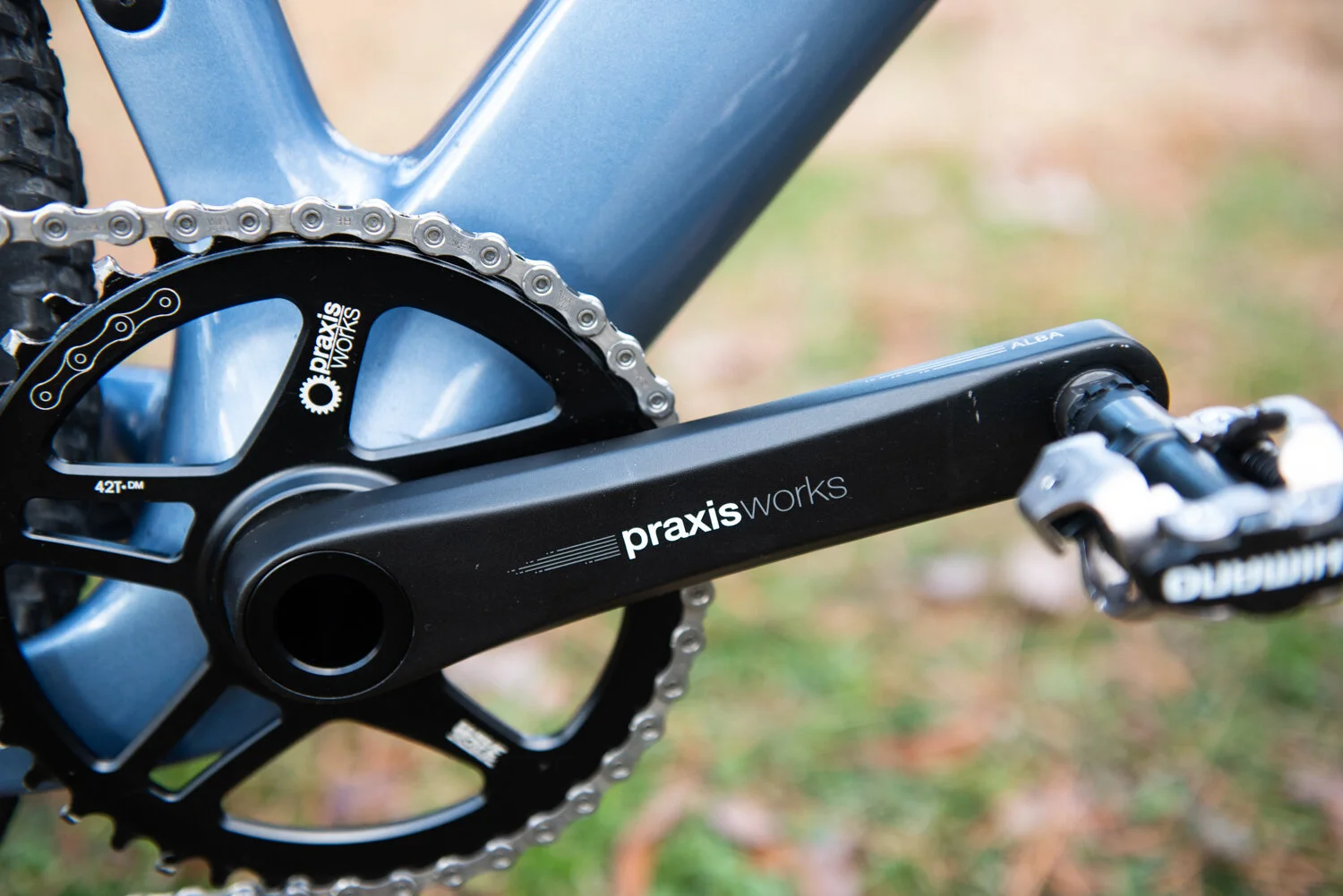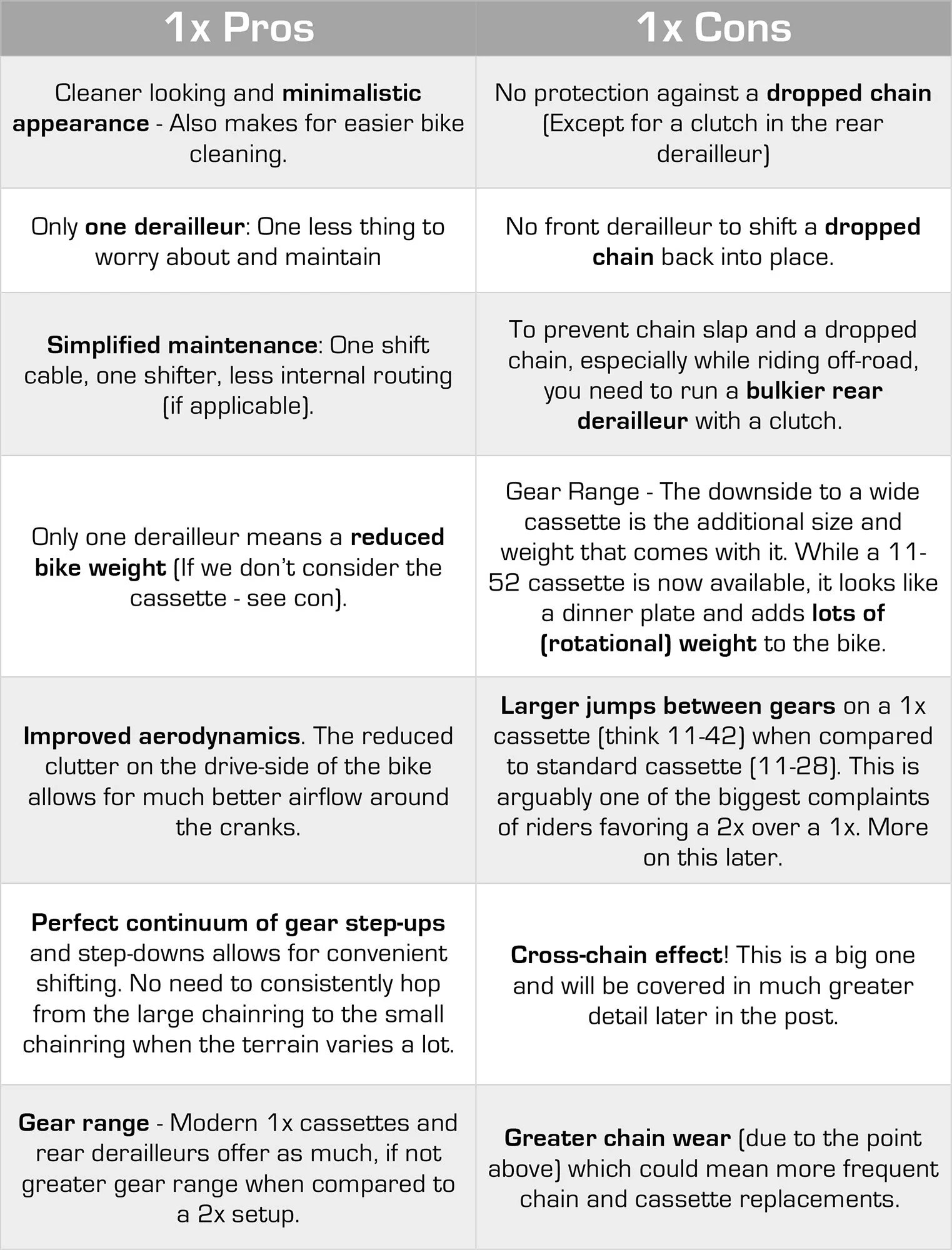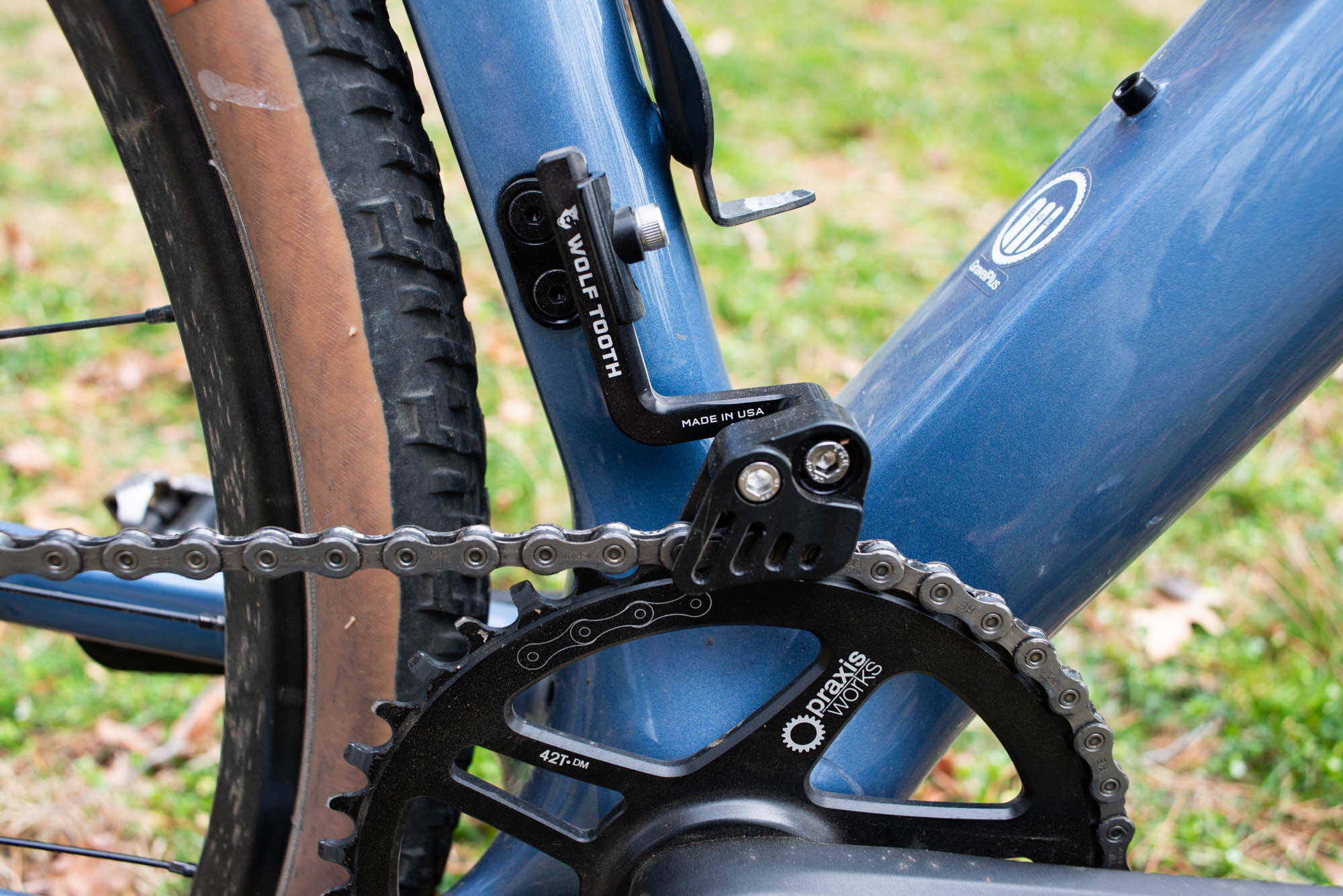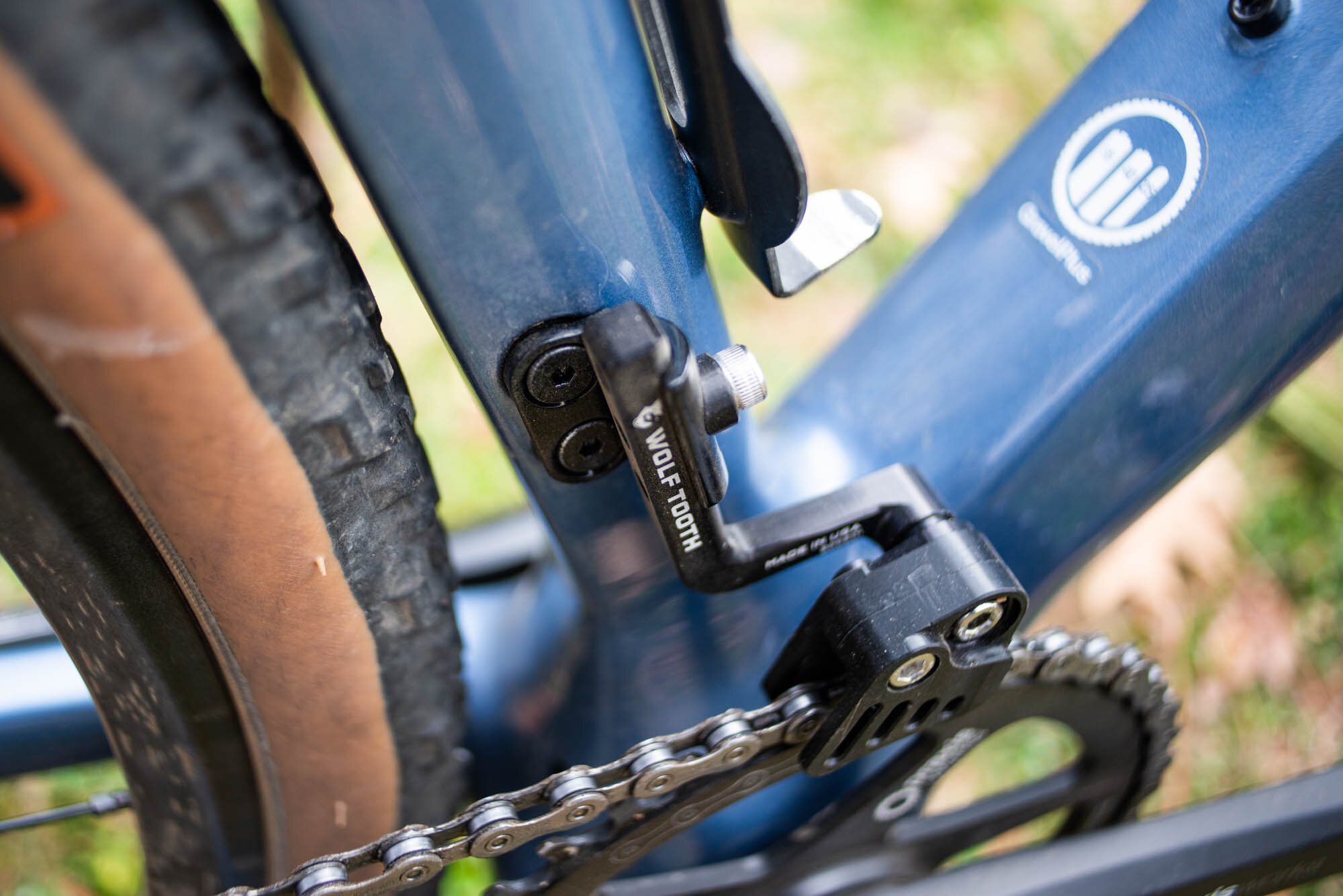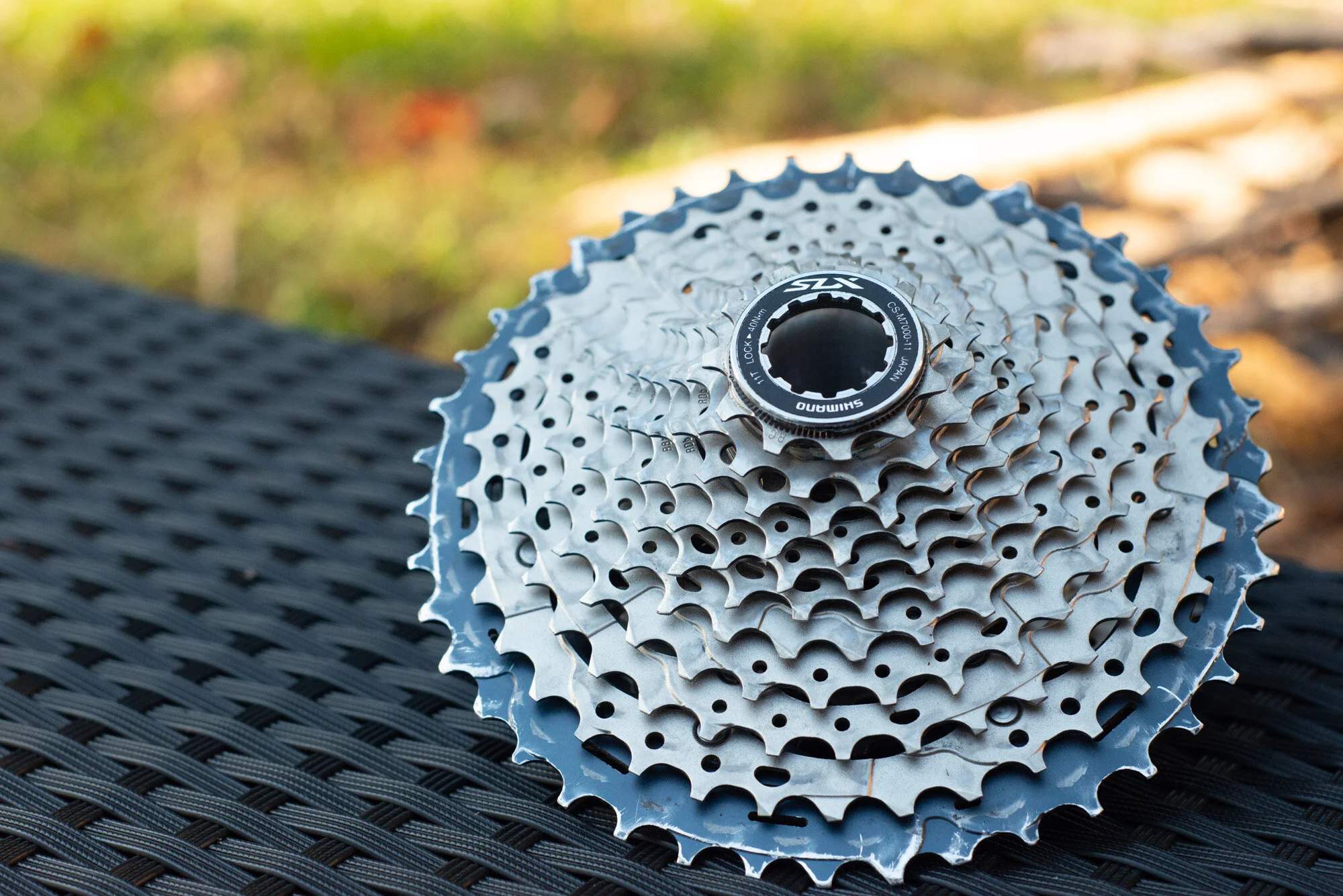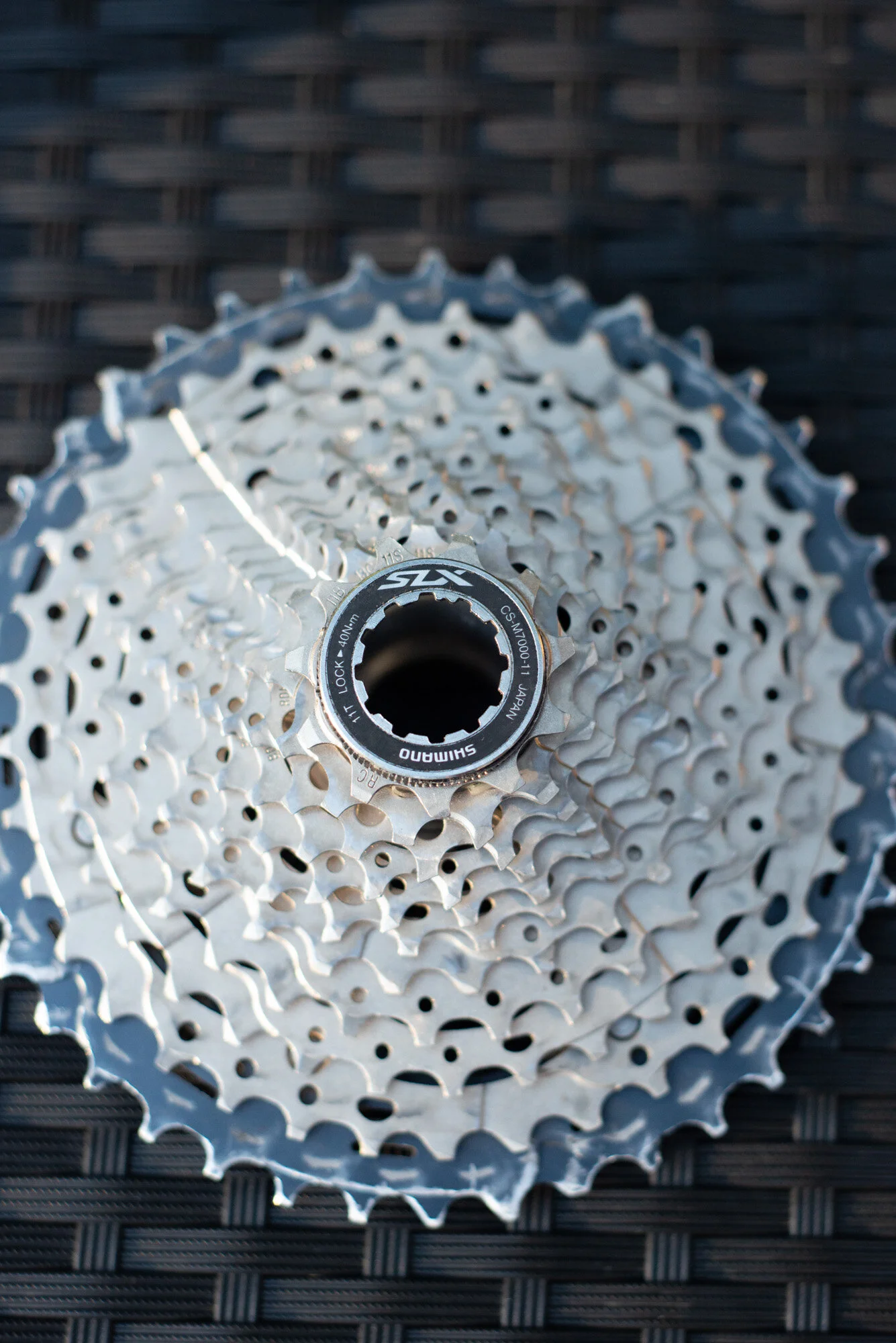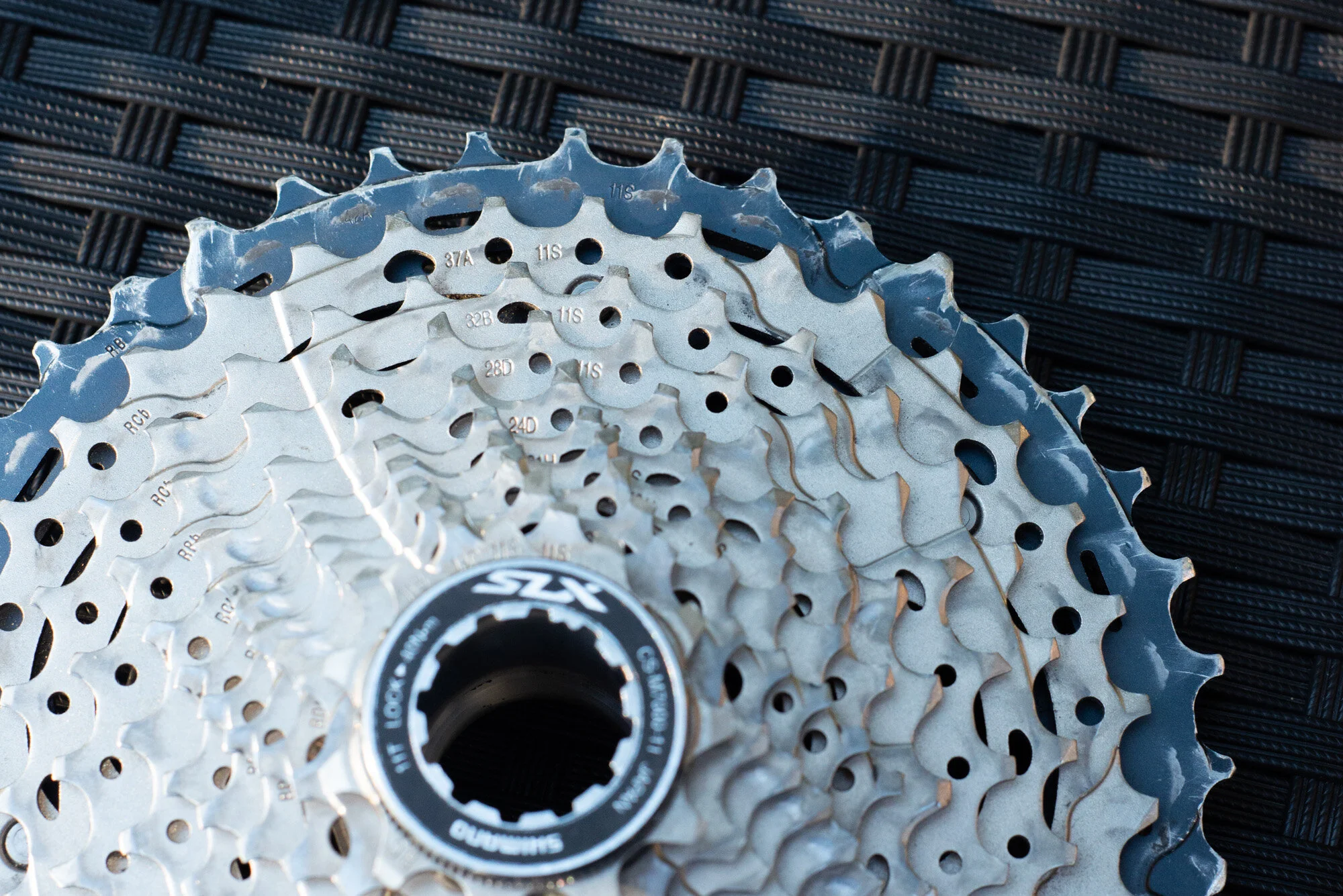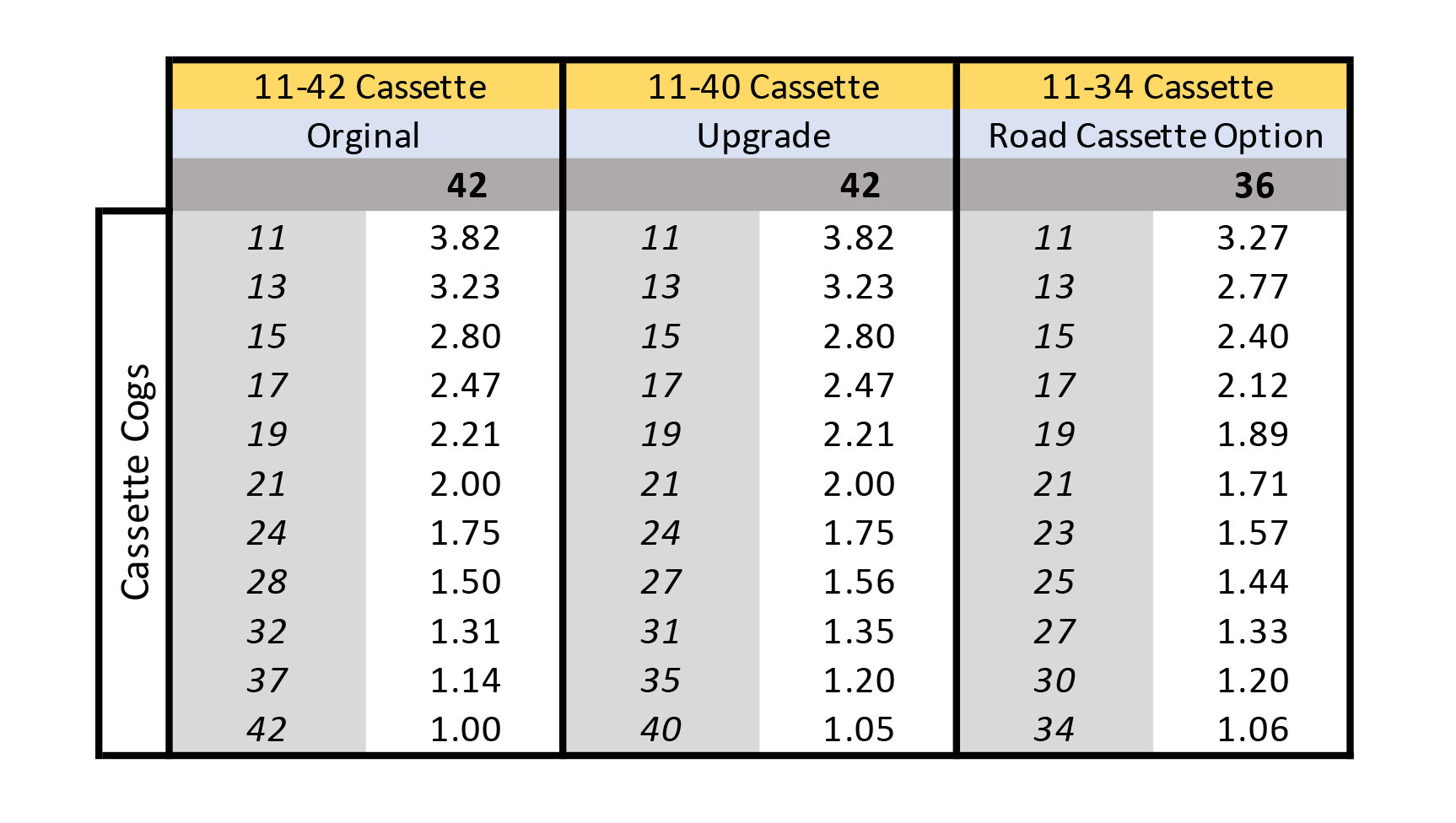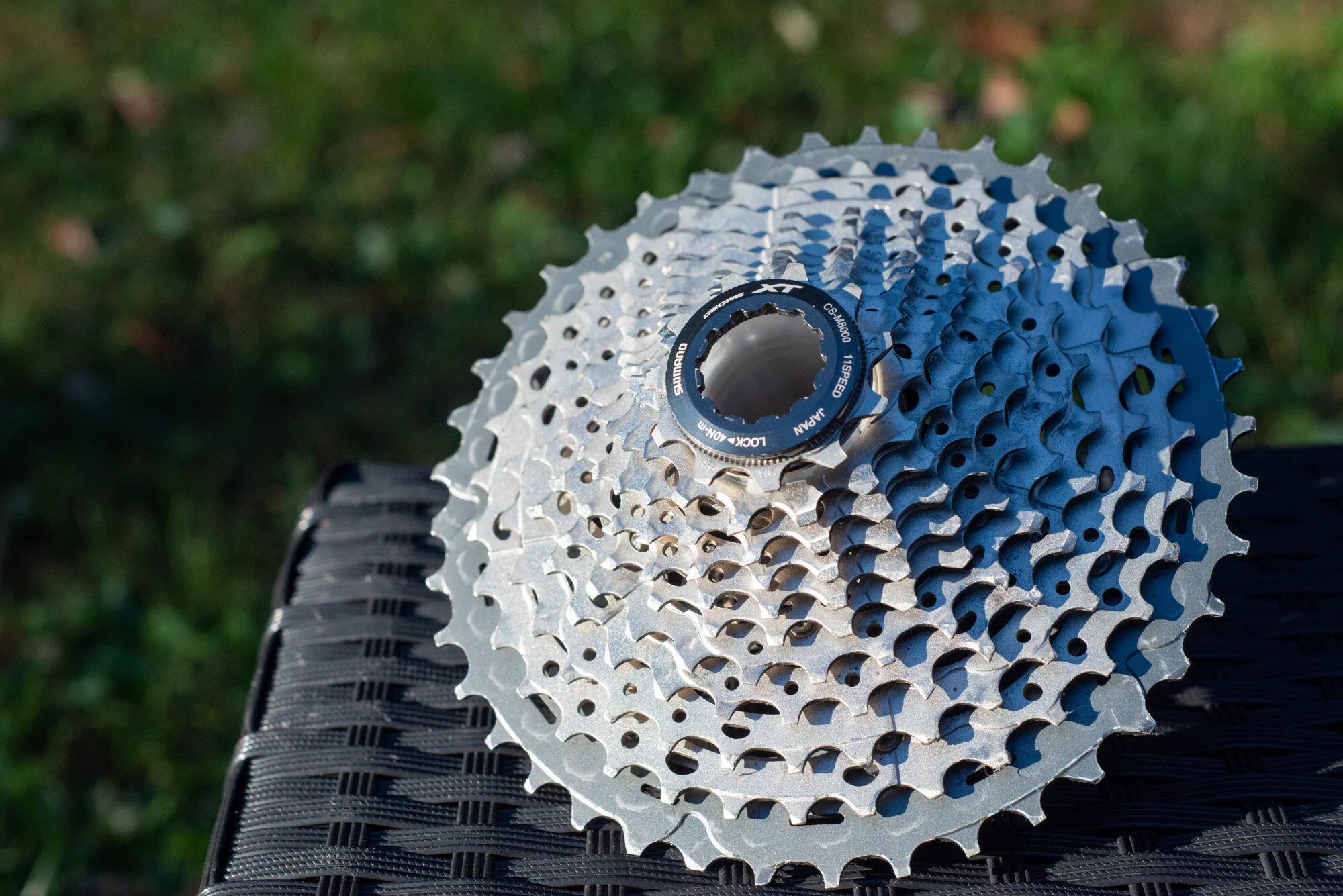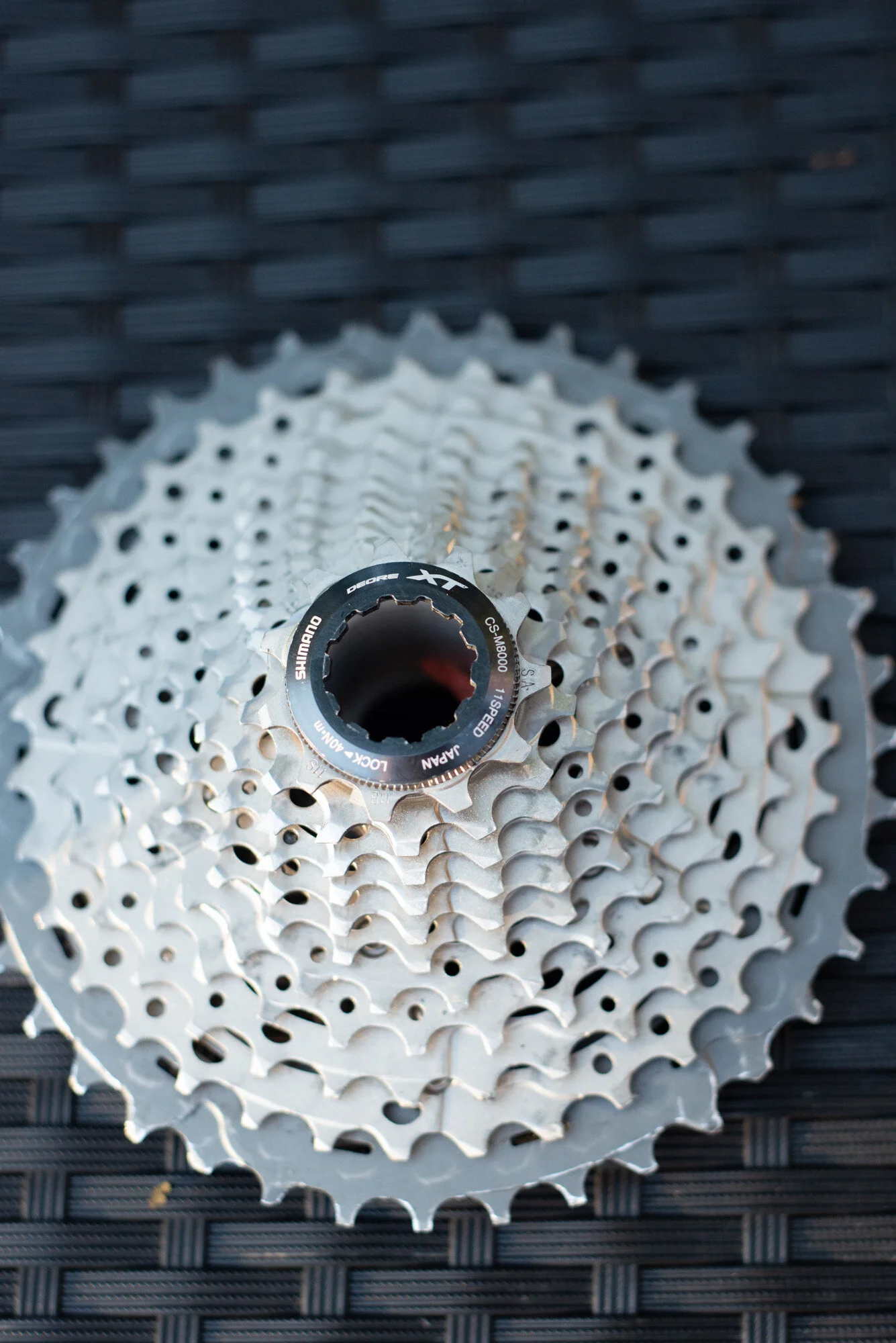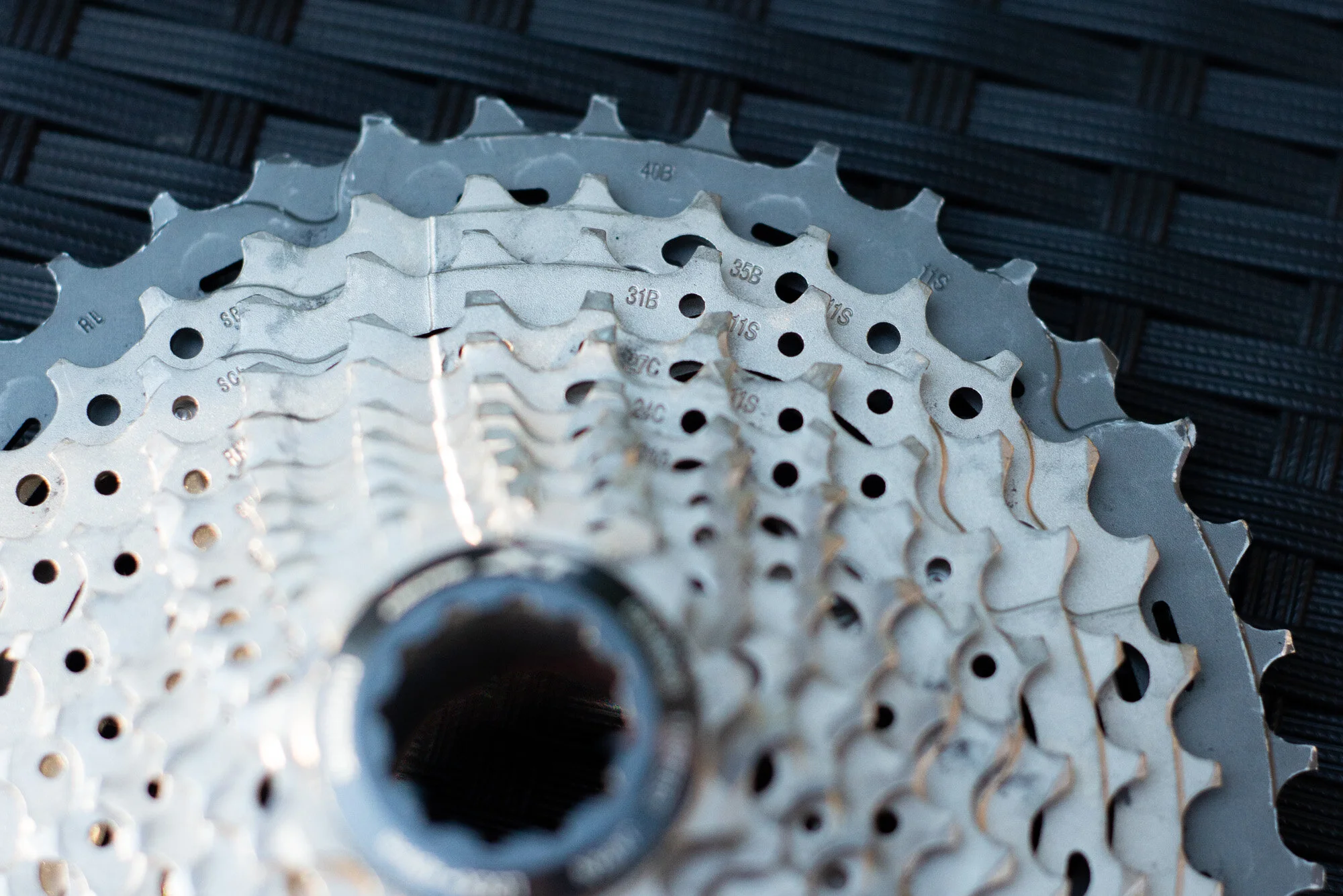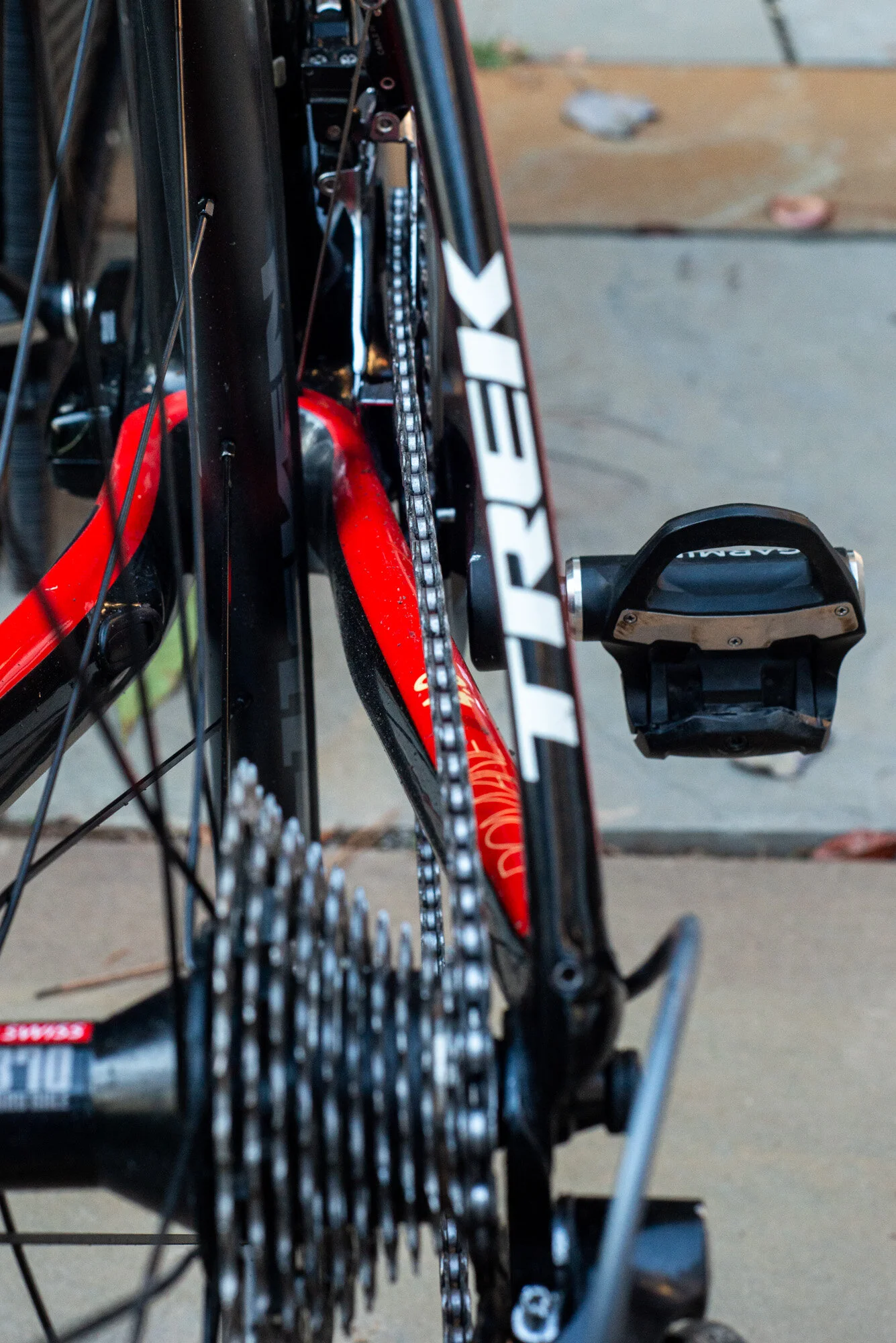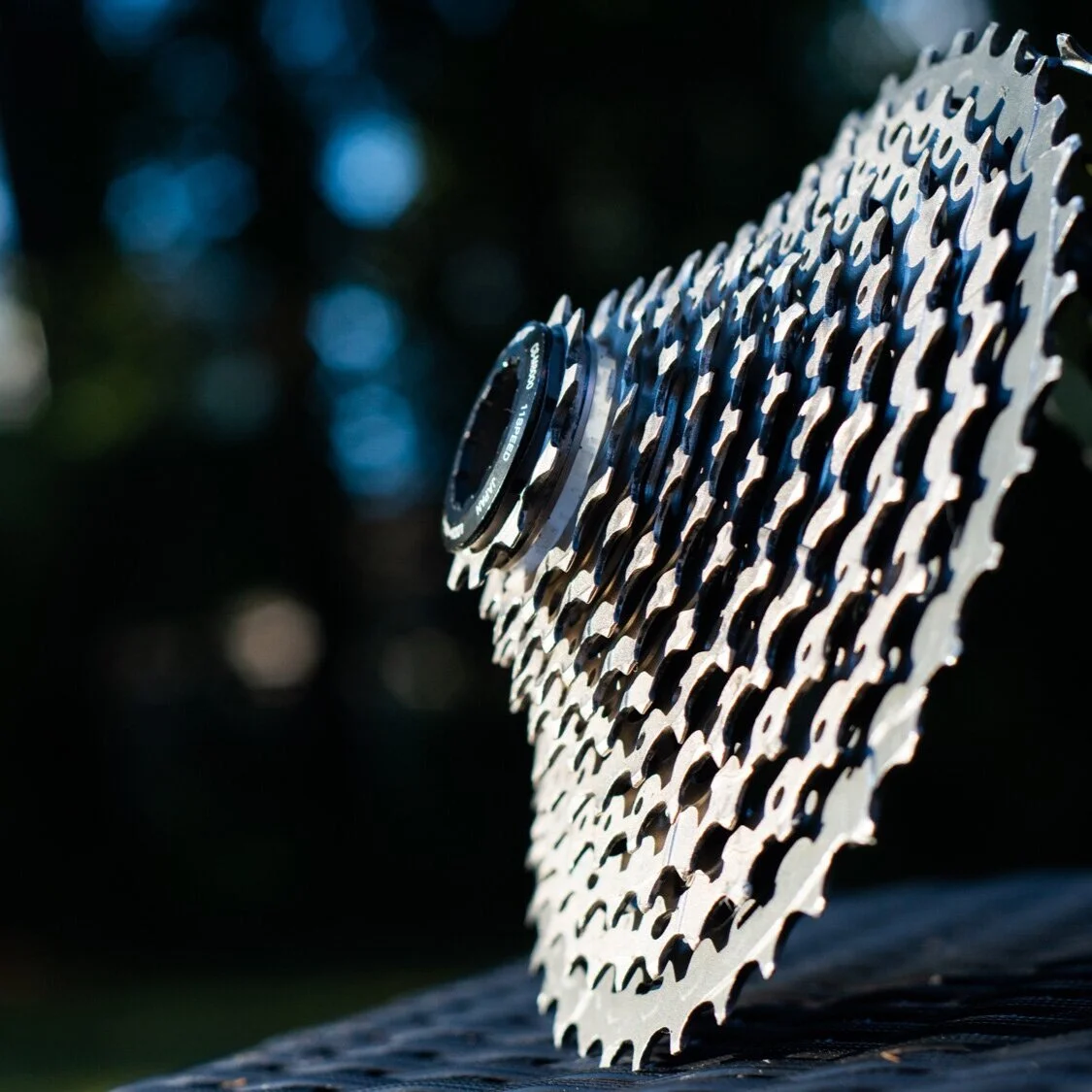The Pursuit Of 1x Efficiency: Can 1x Groupsets Be As Good As 2x?
Disclaimer: This post contains affiliate links, through which we earn a commission.
Single front chainring (1x) groupsets have continued to grow in popularity in recent years and nowadays we see far more bikes that come stocked with this minimalistic gear setup. Primarily favored only by mountain bikers, the 1x setup is quickly spreading to all types of bikes on the market. Everything from E-bikes, to triathlon setups used by top Ironman pros, to World Tour pro road bikes, to gravel bikes now feature the much more simplified and cleaner looking 1x gearing setup. You know that gravel 1x setups are going mainstream when even the Italian manufacturer, Campagnolo, releases a dedicated 1x13 gravel groupset. Here is the big question though: Can a 1x setup really stand up to the task and be as good as a traditional 2x setup? In this post and video I’ll weigh in with my take on this question and walk you through my experiences with a 1x groupset that led me down a path of looking for ways to optimize the performance of my gravel bike’s drivetrain. Hold on to your seat, this one is going to get technical and will be filled with lots of bike geekery!
The 1x vs 2x debate
Two of the most heated debates within the cycling world must certainly be the different opinions when it comes to rim brakes vs disc brakes and also 1x vs 2x drive train setups. Some riders who come from a more traditional road riding background will absolutely swear by the 2x setup, while riders who honed their skills on the mountain biking side of the sport will be all too happy to run a 1x setup. Where do I fit into this spectrum?
Well, I’ve been a roadie for all of the last 20 years, but have also dipped my toes into the world of mountain biking from time to time. Growing up in South Africa meant that the best riding routes were often found in remote areas far away from paved roads. Even though all of my mountain bikes were bought at a time when the bikes still came with 26’’ wheels and 3x groupsets, I can claim that I’ve developed a great appreciation for smaller gears on steep hills during my time of riding mountain bikes. That brings me to late 2019 when I bought my first gravel bike, the 3T Exploro, which came fitted with the Shimano GRX 1x groupset. This was my first venture into the world of single chainrings and I’ve had a rollercoaster of emotions as it relates to this groupset, with feelings ranging from absolutely hating it at times, to being over the moon about it on other occasions.
Let’s try to be diplomatic with this debate and look at both sides of this topic by listing some of the biggest pros and cons of a 1x setup. Feel free to leave a comment if you think that I left any off of this list:
That should cover the majority of the talking points when it comes to the different opinions as it relates to 1x setups. If you study my list of cons carefully, you will be able to detect that three key things in particular detract from a 1x setup. These include dropped chains; larger gear jumps and cross-chaining. Over the last few months of running a 1x setup on my gravel bike, I have at times been ultra frustrated with each of those three things. This led me down a path to look for solutions to address each of those issues and to essentially overcome the shortfalls that you find with a 1x setup. I want to dedicate the rest of this post to address each shortfall and report back on how successful or unsuccessful my attempts have been to try to overcome each of the shortcomings.
Shortfall #1: Dropped Chains
A dropped chain on a 1x setup is ultra annoying to deal with since the only way that you will get back to riding is to stop and manually put the chain into its place. Sure, the modern-day derailleur, with a clutch, can do wonders to keep the chain in place, but trust me, there will still be those instances when the clutch doesn’t do its job to keep the chain in place. Those instances also usually come at the least opportune of times, such as when you are in a fast-moving group and really can’t afford to stop and loose contact with the other riders. I have firsthand experience of this! This shortfall was clearly something that needed to be fixed and I quickly set out to find a solution. My answer to the problem - The Wolf Tooth GnarWolf chainguide.
Simple and easy. If there is nothing to stop the chain from falling off, then put something in place. I’m not going to dedicate too much time to this invaluable piece of gear and you can find all the finer details about it in my separate blog post and video. The end result of fitting this to my gravel bike is that now I never have to deal with a dropped chain - ever. I honestly have extreme praise for this small component and still stand by my concluding remarks made in the full review: “[the GnarWolf chainguide] has single handedly helped swing my opinion back in favor of a 1x drivetrain after almost giving up on it entirely”.
Shortfall #2: Larger Gear Jumps
The next shortcoming of a 1x setup is a bit trickier to address. As much as I would like to simply slap a regular road cassette on my bike, the reality is that I need a proper gear range, especially while out on steep gravel climbs. There’s no use in having a perfectly smooth gear step-up that goes up in 2 gear increments, if that gear arrangement can only take you halfway up the hill. In order to have a better gear range, the majority of 1x setups come with monstrous cassettes that often include a number of gears that increase/decrease in 4, 5 or even 6 gear increments. When it comes to these 1x cassettes, there is most certainly truth in the argument that the large jumps can be problematic to some riders.
To illustrate this, here is an experiment that I conducted, and you can easily test this for yourself, if you have a set of rollers (or similar indoor trainer) and a power meter. I took my road bike fitted with a 50/34 (2x) front chainring and an 11-28 cassette and did some indoor riding on Zwift. In my simple experiment, I tried to hold a consistent cadence at around 100 rpm while riding in my big chainring. Taking note of the power output, I observed how a single gear shift in the rear from the 15-tooth cog to the 17-tooth cog moved my power output by nearly 20 watts (~200 watts to ~220 watts). That is a significant number of additional watts to produce, all as a result of a simple 2 gear incremental change. Now imagine what happens when you start making jumps that go up in 4 or 5 gear increments. Clearly this can all get a bit too much for some riders. Next, let’s take a look at my scenario to see what strategy I followed to overcome (at least in part) the issue of large gear jumps on my gravel bike’s 1x setup.
When I first got my gravel bike, it had a gear setup that worked fairly well for most applications. I was looking for a setup that provided the gears needed for most paved roads, but one that also provided the required gears to scale steep (10-15% gradient) hills in my area. For this purpose, my original 1x setup included a 42 tooth chainring in the front and an 11-42 Shimano CS-M7000 cassette in the rear. Although this setup offered everything that I needed from a gear-range standpoint, it did include some large jumps, especially towards the higher end of the gear range. Just take a look at this cog by cog breakdown to see what I mean:
11-Speed Shimano 11-42 CS-M7000 Cassette cogs: 11, 13, 15, 17, 19, 21, 24, 28, 32, 37, 42
The first part of the cassette follows the standard 2 gear incremental change, but then the jumps increase rapidly and go up by 3 gears, twice by 4 gears and twice by 5 gears. I particularly didn’t like that last sequence of two 5-gear increases. Very often while climbing, I would feel that the rhythm of my pedaling was disrupted when making such large jumps between gear shifts. I simply didn’t feel as efficient as I would have liked to be, and I really started to comprehend the criticism that 2x-loyalists had with regards to the large gear jumps that come with a 1x setup.
This bring us to my solution and how I set out to find the best way to overcome this inherent shortcoming of a 1x setup. After spending hours scrolling through sites filled with gear setup recommendations and even constructing my own Excel spreadsheet that compared gear ratios (#bikenerd!), I finally came to a conclusion. To retain as much of the gear range as possible, but at the same time also reduce some of the largest gear jumps, I would simply have to change my cassette from 11-42 to 11-40. To see why I picked this option, take a look at the following snippet from my gear ratio spreadsheet:
You’ll note that I narrowed my search down to the point where I was considering a road cassette (11-34) grouped with a smaller chainring (36T) in the front. This would have nearly given me the same range, with only marginal sacrifices at both ends of the range. This combination of a road cassette and smaller front chainring would certainly have been the better option to try to reduce large gear jumps as much as possible, but this choice would come with a few drawbacks. I would need to purchase not only a 36T chainring, but also a new rear derailleur that could accommodate an 11-34T cassette (my Shimano GRX 812 cannot - see my full post about Shimano derailleurs if you want more spec details).
In the end, I decided to go with the option that required the fewest number of parts (to keep the cost down) and purchased an 11-40 Shimano CS-M8000 cassette. Refer back to my table above and take note of the differences in the gear jumps when compared to the 11-42 cassette.
By making the change to the 40T cassette, I reduced the two 5-gear jumps down to only one 5-gear jump. This might not seem all that significant, but I can report back that my testing, on some extreme hills, went much better than what I was expecting. The step-ups in the gear range feel much smoother and, by gradually easing into the higher end of the range, I was able to maintain my cadence so much better while climbing. I also didn’t feel like I was really missing the lost range all that much and even when I maxed out my gears, I was still able to scale climbs that measured in at 10-20% gradients. The 40T cog does, of course, have its limitations, and when gradients hit 20+% I could no longer hold my cadence anywhere close to what I wanted it to be. In the end, this small and seemingly insignificant change definitely helped to overcome the second shortfall of a 1x setup. The smaller size of the 40T also meant that I shed some weight off of the cassette - 59g to be precise (11-40T = 417g vs 11-42T = 476g).
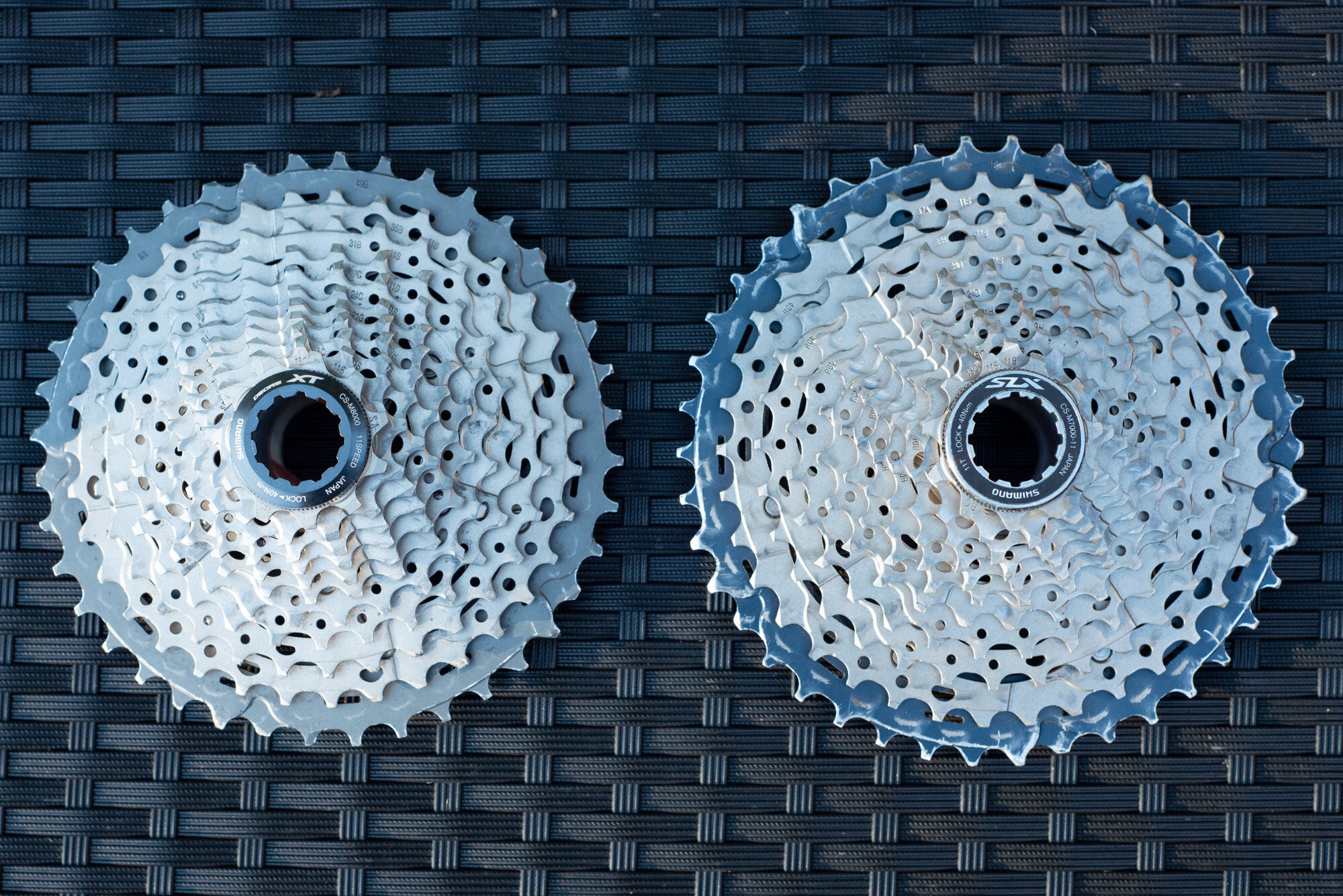
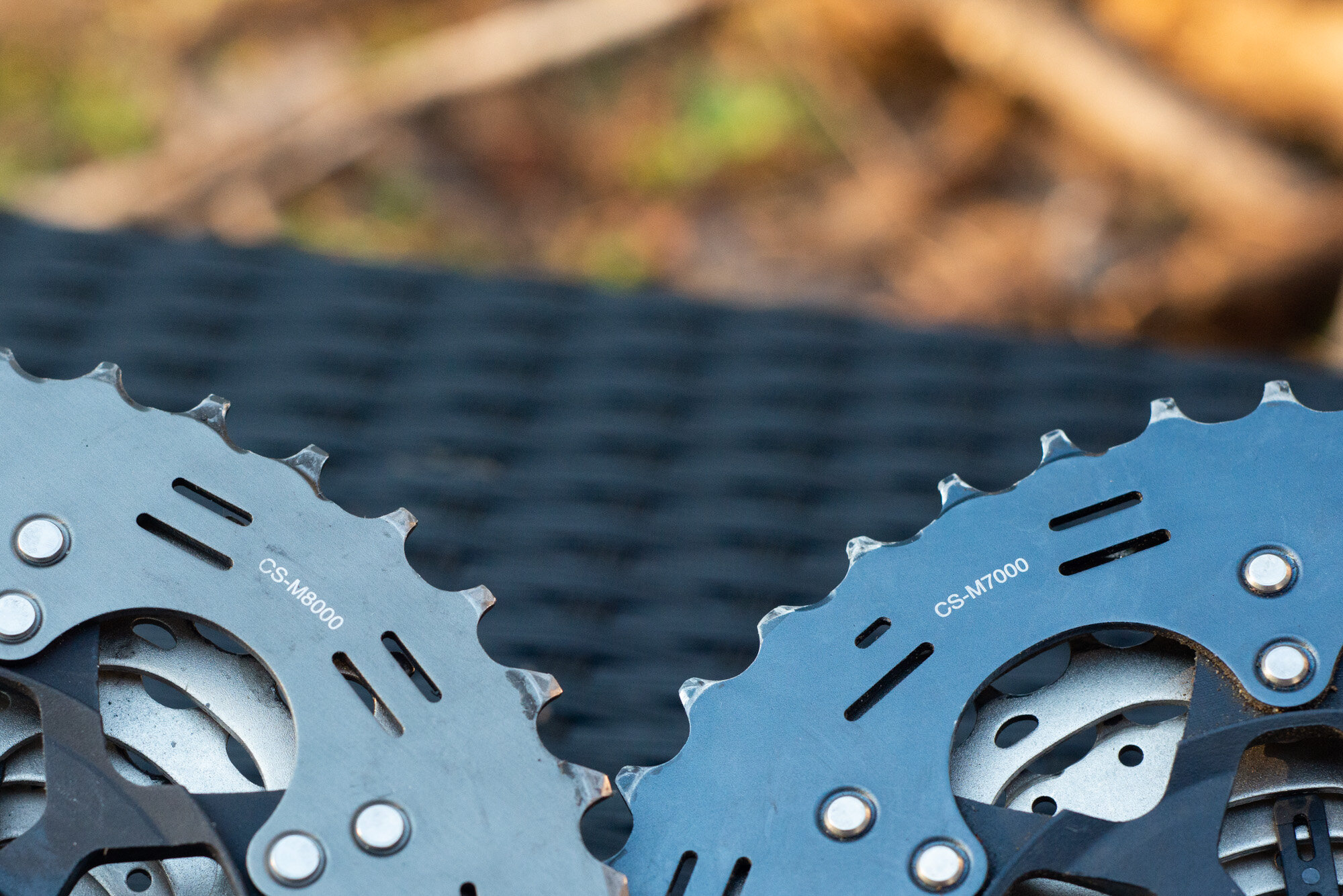
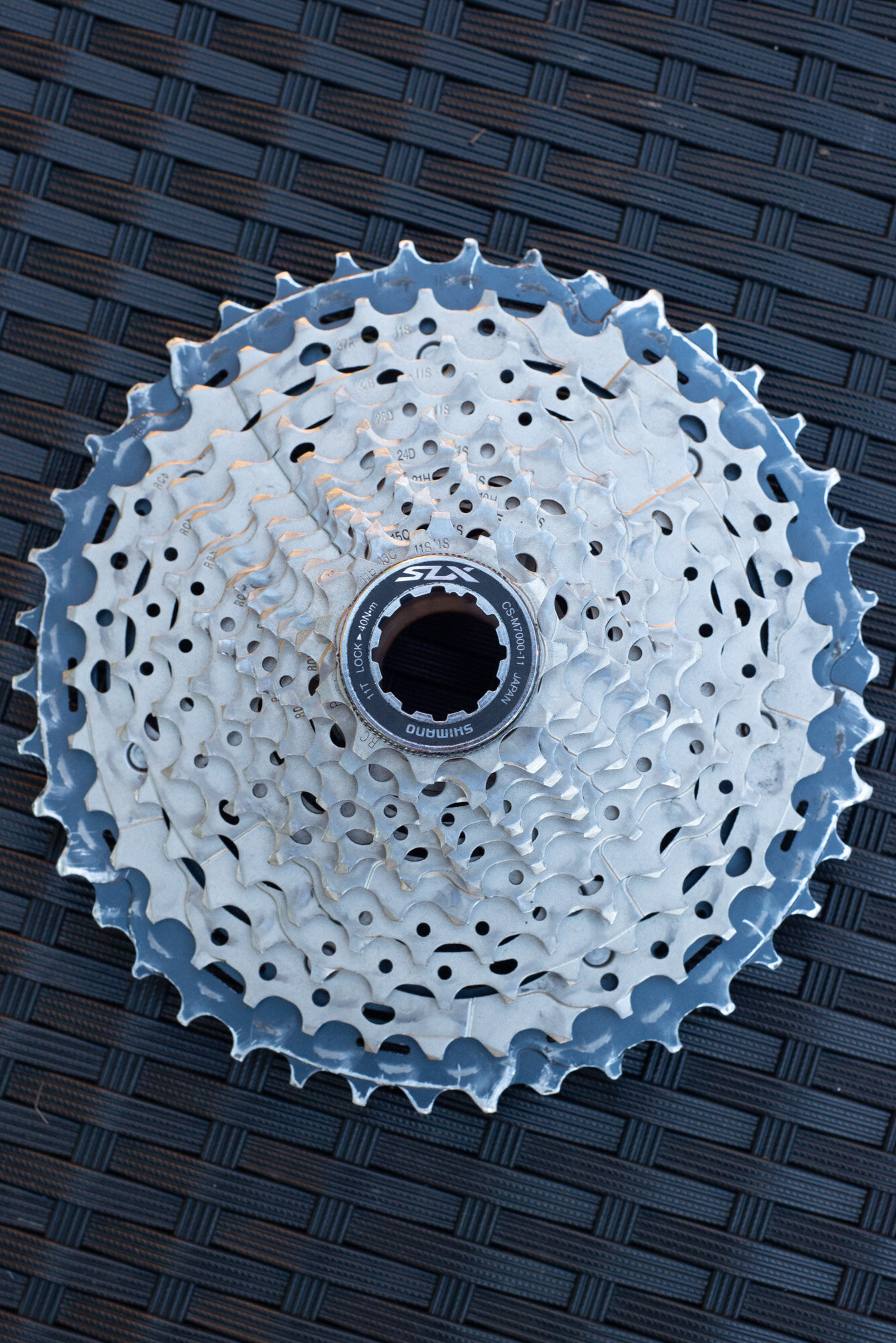
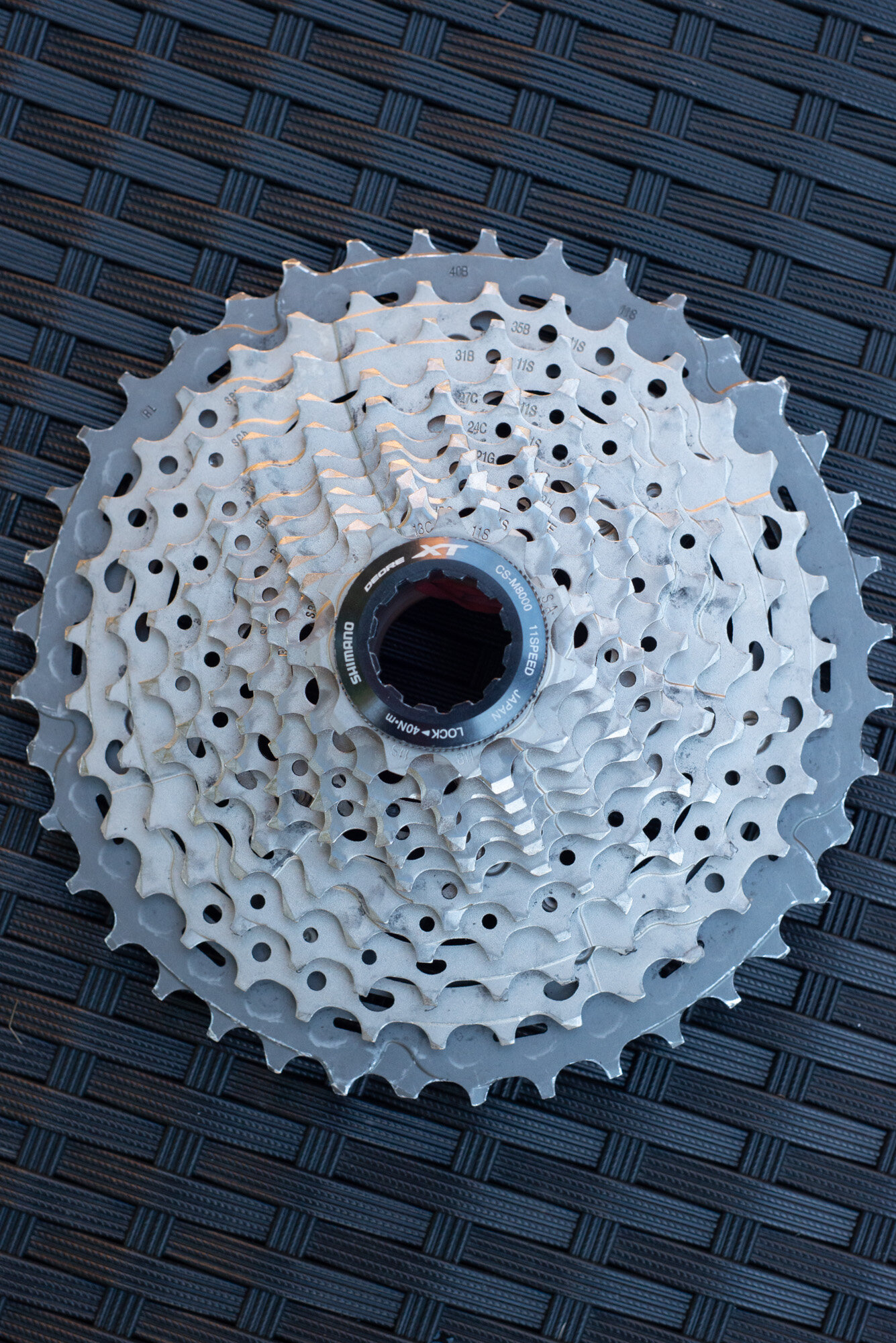
Do these enhancements perform as well as a more compact cassette? Absolutely not. There are still a few large jumps, but in some way, this was the best compromise that I could find for improving the performance of a 1x setup on my gravel bike.
Shortfall #3: Cross-chaining
The next shortfall of a 1x set-up is perhaps the one that I’ve battled with the most. Let’s start by first defining what I mean with cross-chaining. If you’ve ever ridden a 2x setup, then you most likely would have been taught never to run certain gear combinations. In particular, you should not shift into the largest rear cog while using the large front chainring and similarly you should not use the smallest rear cog while using the small front chainring. This is due to the excess strain that such gear ratios place on the chain. It effectively causes the chain to run in a diagonal line (as oppose to a straight line) from the front to the back gears. Physics dictates that a power load transferred via a straight line is much more efficient than trying to transfer the same power via a diagonal (or angled) line.
Not only does cross-chaining cause inefficiencies in the system, leaving you to waste precious watts while you pedal, but it also adds to the wear and tear of components. When running these “no-go” gear combinations, you can sometimes even hear the loud grinding noise as the chain rubs against the cassette and chainring teeth. The 2x setup deals with this cross-chain effect by physically moving the chain into a better line (either closer to or further away from the frame), as you shift from the big and small chainrings.
When we bring this back to a 1x setup, where there is no physical changing of the chain into a better line, it becomes near impossible to avoid the cross-chaining effect. When you only have 11 or 12 gears to work with and need every one of them to obtain the required gear range, it becomes inevitable that you will shift into gears that place excess strain on the chain. Two gears in particular have given me the most issues; the largest rear cog and the smallest rear cog. When I ride my 1x setup and run those two gears I just can’t help but get frustrated by the additional grinding that I hear from the drivetrain. This is all due to the cross-chaining effect and the extreme angle that the chain needs to run when using these gear combinations.
After years of riding a 2x groupset on my road bike, I’ve come to really enjoy the precision and efficiency that it provides, but now with a 1x setup, I’ve unfortunately run into the unavoidable inherent flaws within the system on countless occasions. Great, so I’ve clearly defined the problem, but is there solution? This is how I sought out to improve shortfall #3 of a 1x setup...
My thinking was fairly simple - perhaps higher quality components could reduce the amount of inefficiency when shifting to the extreme ends of a 1x gear range. If you paid careful attention when I addressed shortfall #2, you might have spotted that when I upgraded my cassette to a different ratio I also opted to go for a slightly better-quality cassette. The Shimano CS-M7000 cassette was replaced with the Shimano CS M-8000 cassette for this very reason. I wanted to test if a higher quality component could in some way reduce the amount of audible grinding from the drivetrain. Along with this upgrade of the cassette, I also purchased a new chain and decided to go for the top of the line Shimano DuraAce/XTR chain to really give the higher quality components the best shot of making an improvement. Surely the higher quality products are created more precisely and the tolerance level for imperfections should, in theory, be smaller.
Was this upgrade successful? I’m disappointed to report that even with the higher quality parts on the bike, I still haven’t seen that much of an improvement when it comes to the cross-chaining frustrations of a 1x setup. There simply doesn’t seem to be a solution that can overcome the physics of a crossed / diagonal chain line. If you run a 1x setup, you just need to live with the idea that there will be inefficiencies when shifting into the extreme ends of a cassette.
Maybe I’m wrong. Maybe there still are other ways to improve this issue. Can an oversized / ceramic pulley improve the grinding noise? Are higher end / electronic derailleurs (like the SRAM Eagle AXS derailleur) better able to compensate for extreme chain angles? Would a smaller front chainring overcome some of the excess stress? If you have any inputs on this matter, please leave a comment. I’d love to hear your suggestions on how I can overcome this shortfall of a 1x groupset.
And I guess there’s a third option coming into trend these days, with some riders actually opting for single speed. With that option, you certainly don’t have to worry about cross-chain issues, but ouch, those hills must hurt!
Wrap-Up
I am honestly strongly rooting for 1x groupsets and desperately want to see continued improvements in this space. I truly believe that 1x setups are the future and it should continue to gain favor with more cyclists as the benefits of this system become apparent. The minimalistic design, ease of use and improved aerodynamics makes a 1x setup so much more appealing than a traditional 2x setup, but the operating inefficiencies that come with (current) 1x setups still place it a step down from the traditional (2x) gear setup. You’ve seen how I’ve tried to troubleshoot all of the major frustrations that come with a 1x setup and have only been somewhat successful in reducing the inherent inefficiencies. There is at least some light in the tunnel and I really think that design innovations like the recently announced Classified cassette, with its internal 2x ratio adjustment, provides a glimpse of what is possible in the world of 1x groupsets. I’ll be keeping a keen eye on all the developments and will be sure to report on them here, so stay tuned. Let’s see if the 1x-Rebels will once-and-for-all convince the 2x-Loyalist about what they are missing out on.
Leave a comment to let me know your thoughts about 1x groupsets. Like it, hate it or simply couldn’t care less?
- Wiehan


